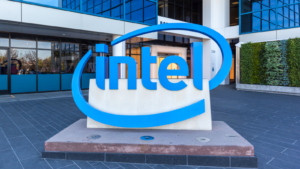Semiconductors are only going to increase in importance over time due to rising demand for electronics, and the valuations of these companies support a long-term view while still being very profitable to hold for investors.
So here are some semiconductor stocks for investors to consider if they want millionaire-minter potential.
Nvidia (NVDA)

Despite its stretched valuation, Nvidia (NASDAQ:NVDA) remains a “Strong buy” according to Wall Street, based on the consensus of 41 analysts.
Part of this optimism comes from a 58.19% projected increase in the company’s revenues, which would put it at $95.30 billion. Meanwhile, its EPS is also expected to surge 67.57% to $21.04. With this kind of expected earnings and revenue growth, it then makes sense to pay a premium to receive them in an investment.
NVDA stock is known for having many forks in the fire to fuel its meteoric growth, but its semiconductor segment is perhaps the most promising. Nvidia plans to expand its manufacturing capacity and explore partnerships in Southeast Asia to boost chip production.
Also, with a $250 million investment, the company aims to target Vietnam to create a hub that attracts global experts and bolsters collaborations with Vietnamese tech companies.
NVDA then looks like it has plenty of gas left in the tank to surge higher. Its trailing P/E ratio of 92 times earnings is also substantially higher than its forward measure of 39. This means it could be relatively undervalued based on this metric.
Intel (INTC)

Intel (NASDAQ:INTC) aims to continue its growth in 2024, capitalizing on its entry into the AI sector and strategic diversification of its revenue streams.
INTC has finally stepped up its AI game with its Falcon Shores GPU for AI-accelerated data centers. This approach is quite novel compared with companies taking a more direct approach to unlocking value from AI, but it’s a move that I think could be highly accretive for the company.
INTC plans to provide the essential hardware to power other disruptive technologies coming out of the AI space, such as generative AI and autonomous driving technologies.
But the company isn’t putting all of its eggs into one basket. Instead, it’s also reinforcing its more traditional business lines through a $20 billion investment in two chip fabrication facilities in Ohio.
With a sizable investment in INTC, I do think it can deliver serious gains for investors and perhaps even create a new generation of millionaires. This is based on the strategic and operational efforts it has made above, as well as its strong EPS and revenue forecasts that imply strong capital appreciation for investors.
Advanced Micro Devices (AMD)

Advanced Micro Devices (NASDAQ:AMD) has undergone an impressive share price recovery in 2023, which saw it gain 118%. The company is in the process of reinventing itself as it moves away from its legacy business lines, such as PC sales, and turns to AI.
This growth is supported by its Instinct MI300 accelerators and a forecasted $2 billion in AI chip sales. The MI300 aims for an over 8x increase in AI training performance over the older chip models.
AMD may also not struggle too hard to find business as it states it has “multiple, large hyper-scale customers” who are interested in giving the MI300s a spin. It might be inferred that at least some of these customers could include marquee names like Meta Platforms (NASDAQ:META), OpenAI or Microsoft (NASDAQ:MSFT), with which it has established partnerships.
I’m bullish on AMD because I believe that it’s underappreciated. Its forward P/E ratio of 44 times earnings is competitive, and the execution risks of it making its operational pivot from PC sales to AI seem to be keeping its valuation lower.
AMD could then be one of those semiconductor stocks that could mint new millionaires if its string of successes continues.
On the date of publication, Matthew Farley did not have (either directly or indirectly) any positions in the securities mentioned in this article. The opinions expressed are those of the writer, subject to the InvestorPlace.com Publishing Guidelines.
Matthew started writing coverage of the financial markets during the crypto boom of 2017 and was also a team member of several fintech startups. He then started writing about Australian and U.S. equities for various publications. His work has appeared in MarketBeat, FXStreet, Cryptoslate, Seeking Alpha, and the New Scientist magazine, among others.
